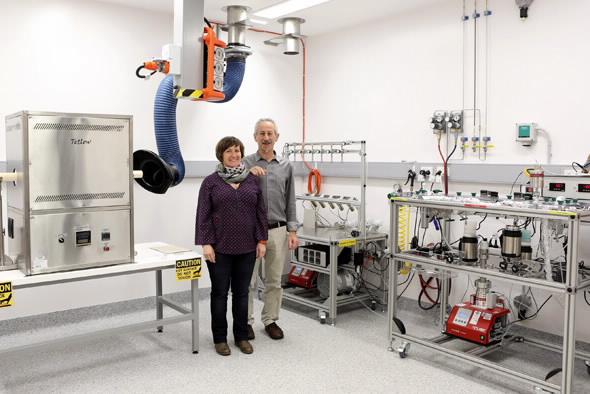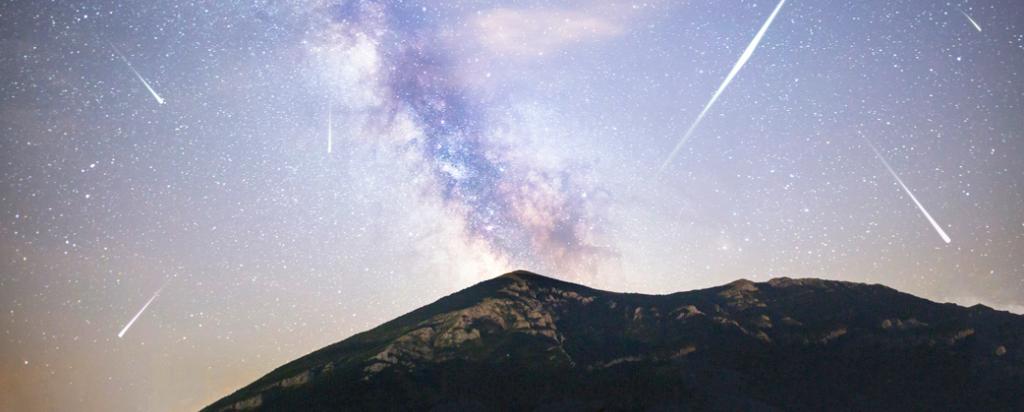

Published on the 30th April 2018 by ANSTO Staff
 |
ANSTO and the University of Wollongong are jointly operating a unique laboratory able to extract carbon-14 (radiocarbon) atoms out of a rock that is attracting global interest as a new tool to better understand recent changes in Earth’s climate system and rates of landscape change over the past 20, 000 years.
Atmospheric-produced radiocarbon results from the interaction of cosmic rays when they pass through Earth’s atmosphere and is extensively used in archaeology and climate change studies.
In-situ produced carbon-14 is a member of a group of very rare isotopes called cosmogenic nuclides which are produced by the interaction of energetic cosmic rays when they collide with oxygen atoms in quartz bearing rocks at the Earth’s surface.
In-situ cosmogenic carbon-14 is very difficult to measure because the prolific atmospheric radiocarbon signal that rains down must be removed from the miniscule amount in the rock.
Dr David Fink, a principal research scientist at the Centre for Accelerator Science, said the availability of in situ carbon-14 that can be measured on the ANTARES and VEGA accelerator mass spectrometry (AMS) facilities is a valuable addition to ANSTO’s cosmogenic nuclide toolkit.
“Only two other AMS centres in the world are doing in-situ carbon-14 – and our system is 50-fold more sensitive with a higher sample throughput.”
“Carbon-14 has a very a short half-life of 5,730 yrs and thus compliments ANSTO’s world-class laboratory for measurement of cosmogenic beryllium-10 (half-life 1.4 million years), aluminium-26 (0.7 million years) and chlorine-36 (0.3 million years) allowing very recent or short lived geological events to be studied that are invisible to the other long- lived cosmogenic nuclides,” said Fink.
“This opens up the possibility of using the in situ carbon-14 to untangle complex exposure histories of landscape erosion, river sediment storage and glacial climate change during the Holocene which is defined as the last 10,000 years since the Last Ice Age ended.
“It is being used to date sediment transport from river systems in Australia providing insights into how the sediment moves through the fluvial system, how much time is spent in the system until it reaches the outlet. Because sediment gets stored in a catchment, the signal you get at the outlet might be wrong. This information helps us interpret links between surface processes, tectonics and climate.” said Dr Réka-Hajnalka Fülöp, a joint researcher at ANSTO and the University Wollongong, who designed and constructed the in situ carbon-14 extraction laboratory.
The innovative design is based on modifications to a system originally developed under the direction of Prof Tibor Dunai at the University of Cologne, where Fulop was a post-doctoral researcher.
“An early one-piece design used glass for the extraction lines that was prone to breakage and made it difficult to achieve appropriate vacuum levels. This was later changed to stainless steel by a group at ETH Zürich, which greatly improved things but processing one sample took two days,”said Réka Fülöp.
"The innovation in our new system is that it comprises a dedicated high temperature furnace and three independently operated modular units, which allows for increased throughput of samples.
“We can process at least six samples a week and our control blanks are very good,” said Réka Fülöp.
The first component is the cleaning phase, which involves heating the quartz to 500 C, which ensures that the atmospheric radiocarbon is completely released from the quartz and evacuated from the vacuum chamber.
The second component applies extremely high temperatures (1650 C) to the quartz in a fused silica tube which melts the quartz grains without the use of a fluxing agent to release the in situ carbon-14 trapped as CO2 gas in the lattice structure
The third component purifies the CO2 at -80 C to remove any water and -145 C to remove any other contamination.
Following extraction and isolation, the carbon dioxide gas can be directly analysed using a gas ion source attached to the accelerator mass spectrometer such as carried out at ETH-Zurich or using ANSTO’s world famous microgram radiocarbon graphitisation units and then measured as a solid target by AMS.
“The ANSTO - University of Wollongong extraction rig produces far lower blanks than any other extraction process,” said Réka Fülöp.
“When our first data set was presented at the 13th International AMS Conference in Ottawa, Canada in August of last year, it made a real splash because we out-performed other in-situ cosmogenic carbon-14 extraction rigs that use a different design”, said Reka Fulop.
“Since that time, world leading researchers in radiocarbon and geochronology from Canada and Europe have visited ANSTO specifically to observe the apparatus in operation and look at the design drawings. This development augers well for a bright future of cosmogenic nuclide-based research at ANSTO,” said Fink